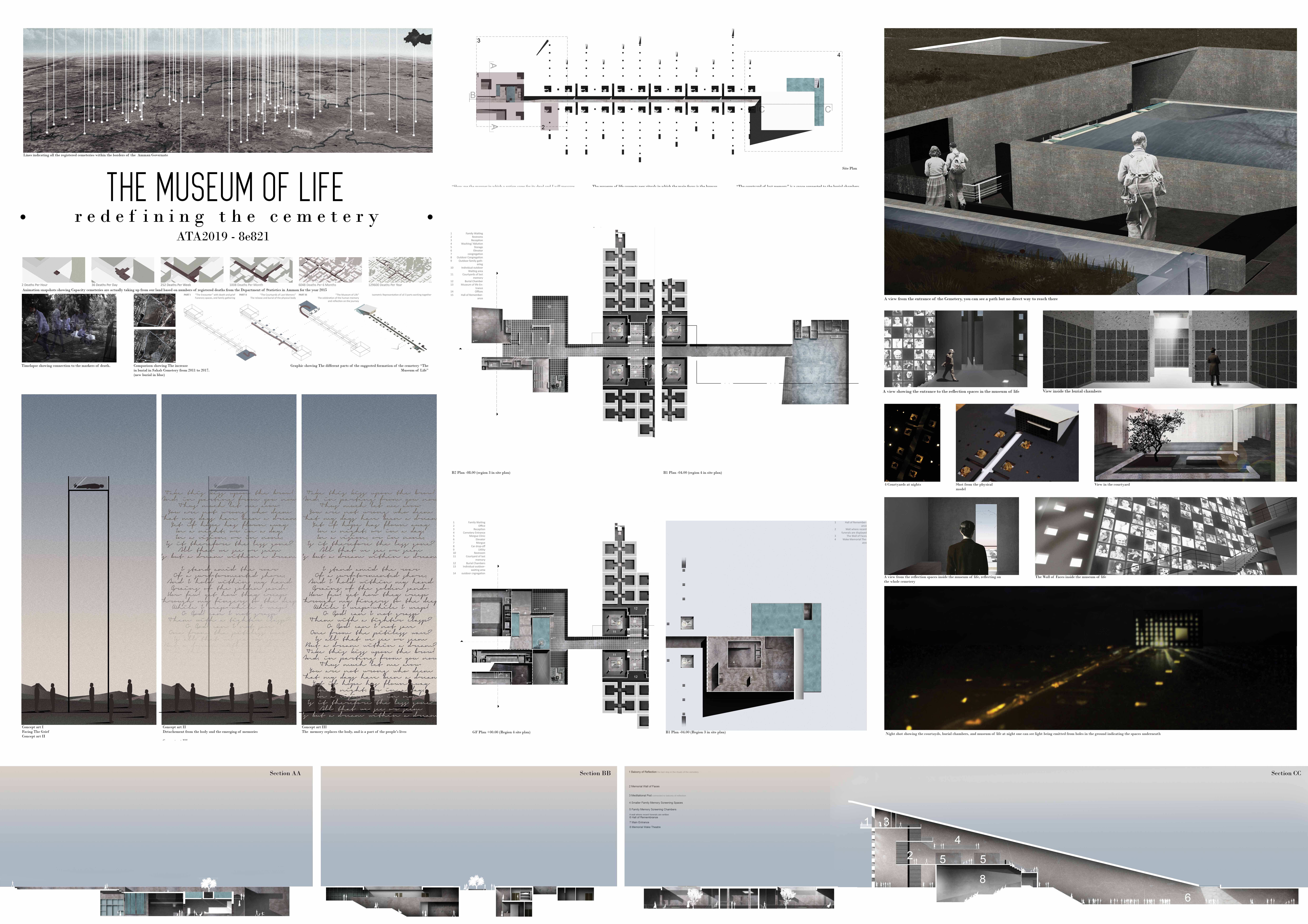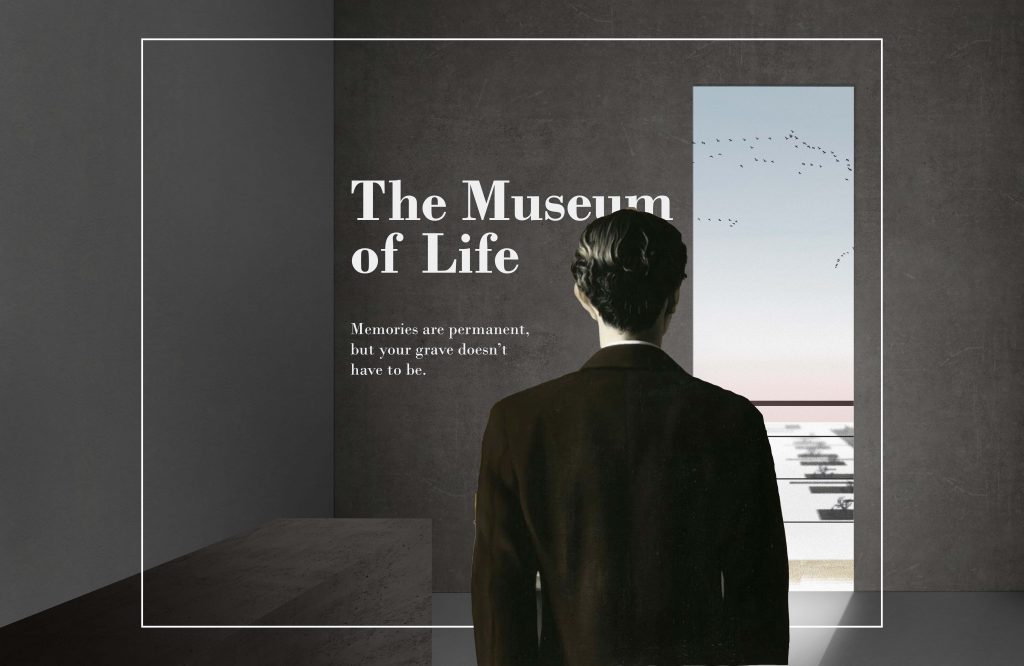“Show me the manner in which a nation cares for its dead and I will measure with mathematical exactness the tender mercies of its people, their respect for the laws of the land, and their loyalty to high ideals.” –Sir William Ewart Gladstone.
Death, and remembrance are key concepts that are now being hidden, hard to experience to the fullest, due to the constant fear of decay, and disintegration, we -as societies, hold and directly reflect in our places of burial.
The Modern man is in a state of denial, and detachment from death and dying.
The built environment of our cemeteries separates us from the ideas of surrounding death that have the ability to flourish our lives.
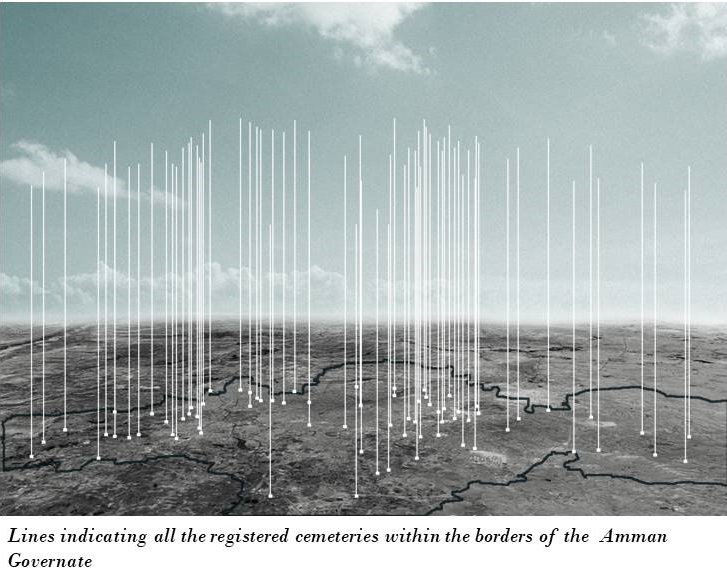
Instead the contemporary space of burial embodies death in harsh physical representations: the tombstone, the urns, etc... “The Museum Of Life” proposes a different way in experiencing, and accepting decay and finding meaning in death, memories, and ideas that will in turn get mirrored into a better understanding of life, one’s self, and reason for being. Here’s how the Museum of Life goes about in doing this: Rethinking the concept of the cemetery, designing new rituals that reject the connection with the body, and instead focuses on the connection with the memories. Because the concept of death of one’s self is usually concealed by emphasis on the death of one’s body, the rituals associated with death in our modern day are very much based on the physical aspects of dying. The museum of life suggests new rituals in which the main focus is the human life, and its contrast with death. It rejects the attachment with the human body (i.e. the specific-space burial, the tombstone, and one to one visitations of the grave), and instead focuses on the attachment with memories through rituals that focus on the deceased’s life, ideas and his relations with his family and friends, thus creating a new entity in the cemetery, celebrating human life, and human memories.
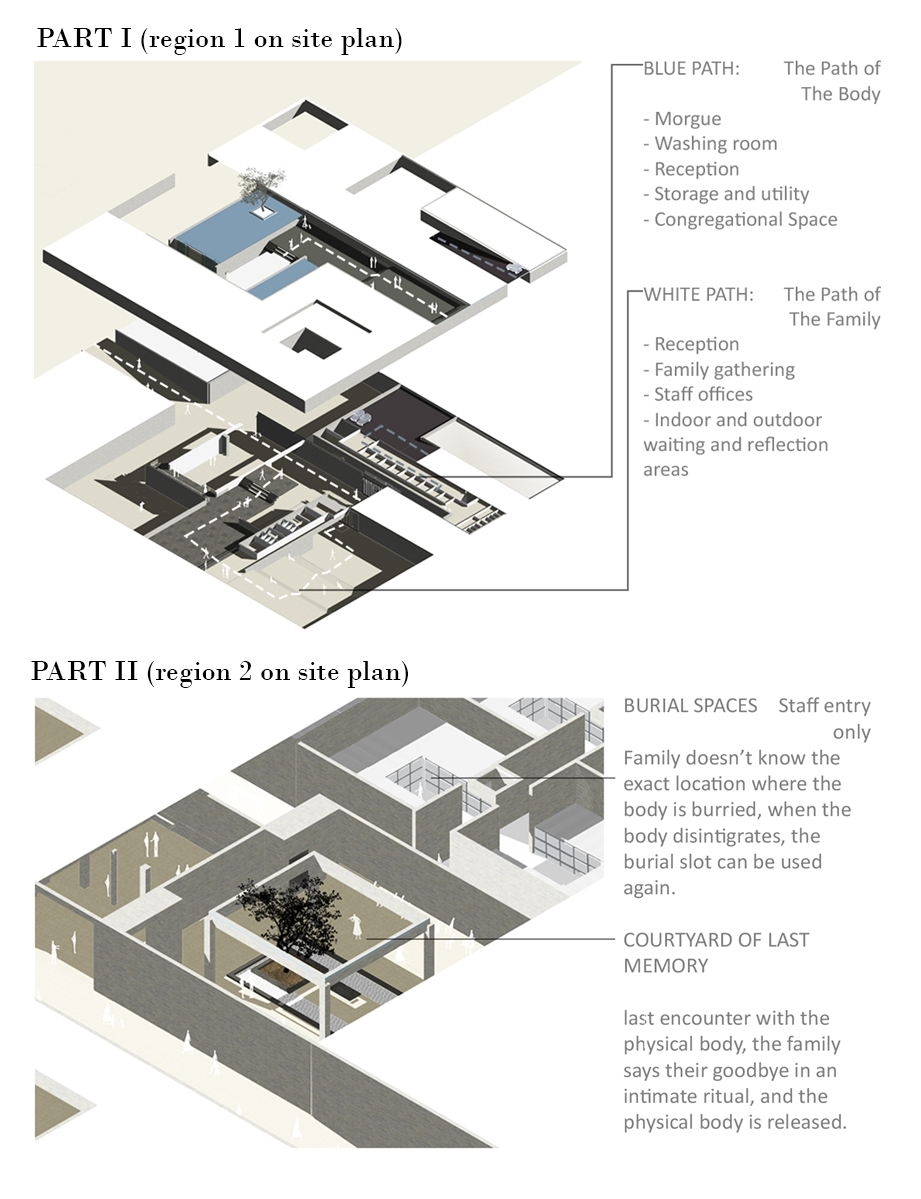
Project description The museum of life is a suggestion for a new formation of a cemetery, where the program is divided into three main parts. The first part “The encounter” is the first space in which people are confronting death, it’s a space of complexity and contradiction, the main feature of which, is that the family, and the deceased’s physical body do not share the same entrance, and instead lead two different journeys that funnel down in the end to join them together. Second part is “The courtyard of last memory”, which is a space connected to the burial chambers. In the courtyard the family sits together with their loved one, to bid them farewell. Since the family is not permitted to enter the burial chambers, the courtyard –instead of the grave, becomes where they have seen their loved one last, which creates a sense of connection to the space, and not the physical grave. In the future, the courtyards become a collective space for visitation instead of the Grave. Third part is the Museum of Life itself where family members share memories of their loved one, and come visit their loved ones memories in different remembrance chambers, some of which are collective for huge families and others which are more individual for reflection and meditation. The Last stop in the project is the “balcony of reflection” which looks back at the whole journey of the project, showing the courtyards, paths, and light wells as holes in the ground.
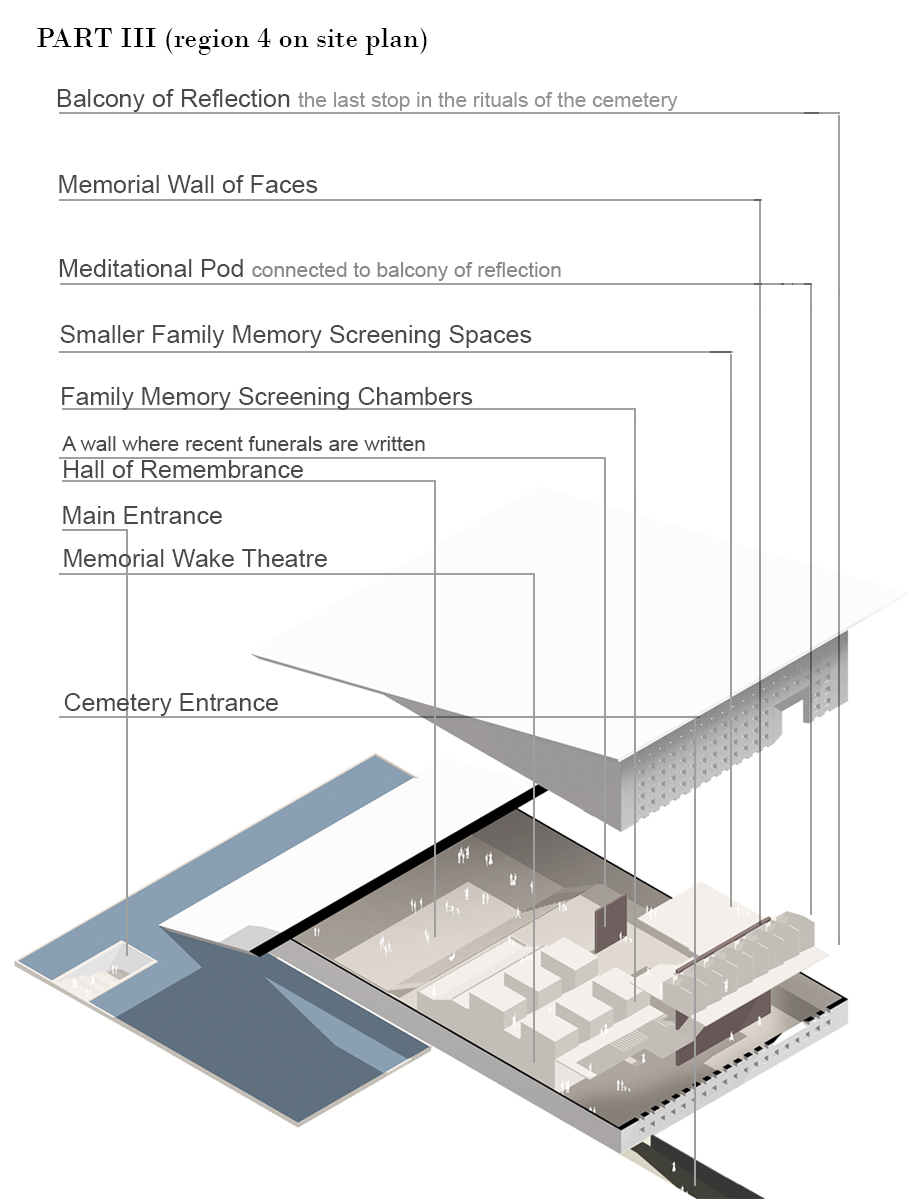
The Board:
